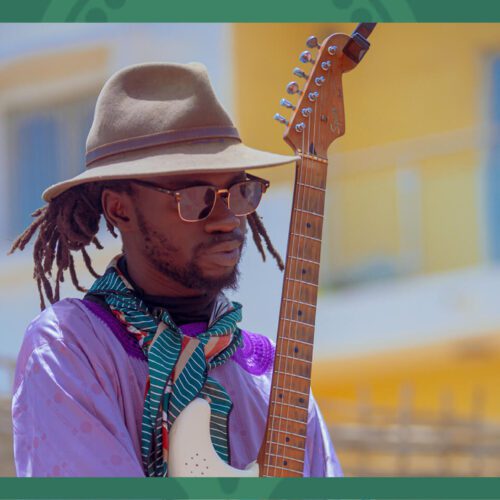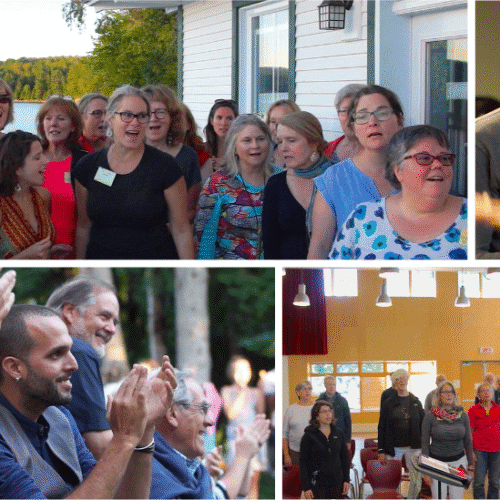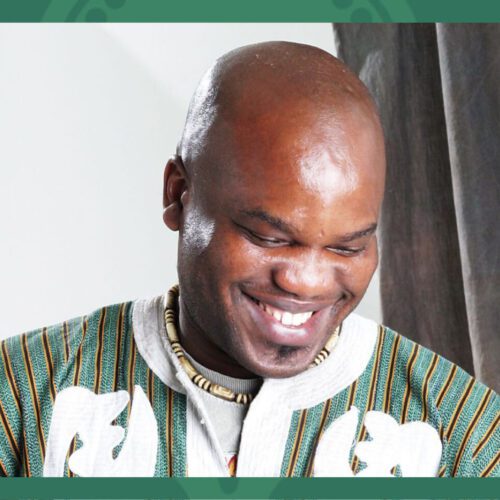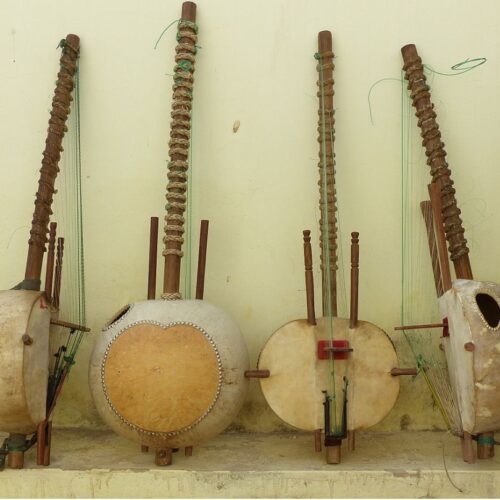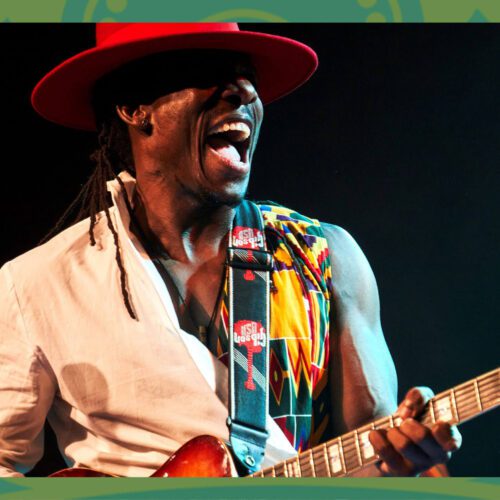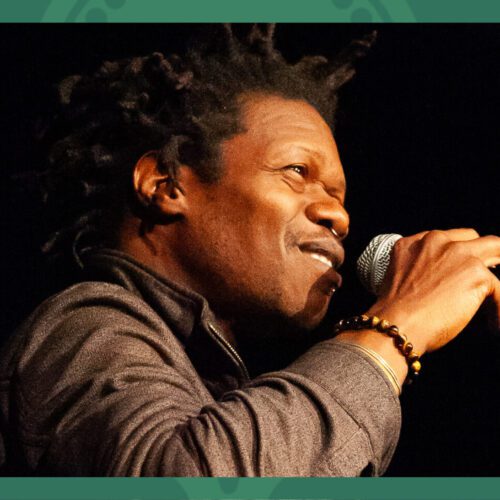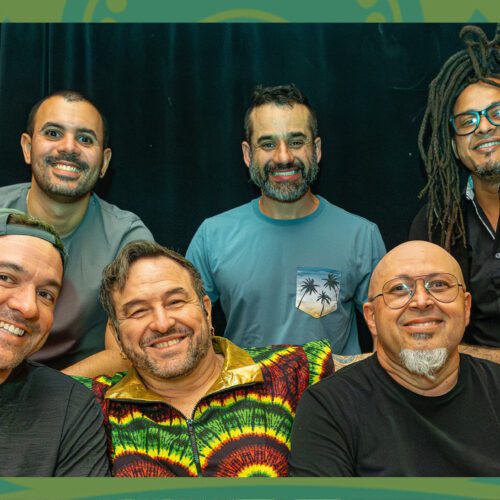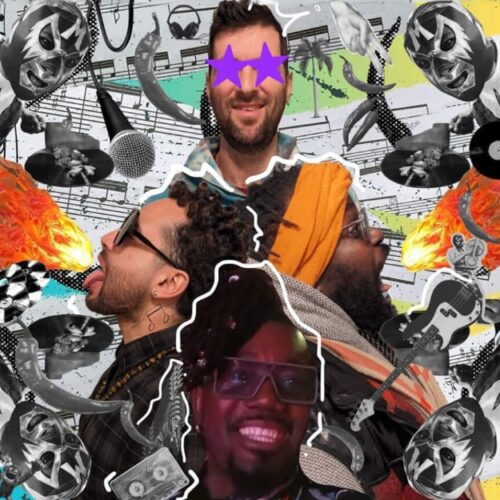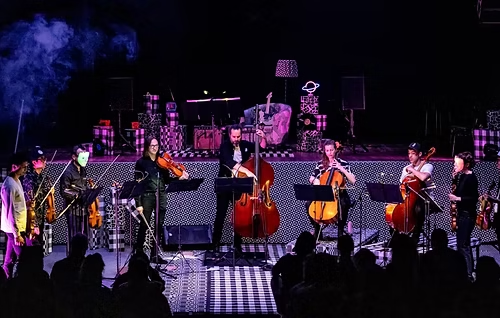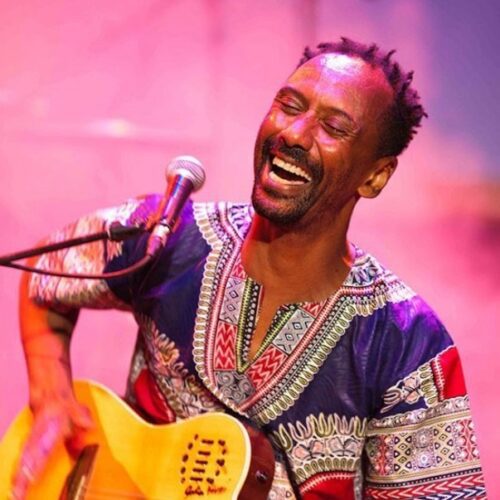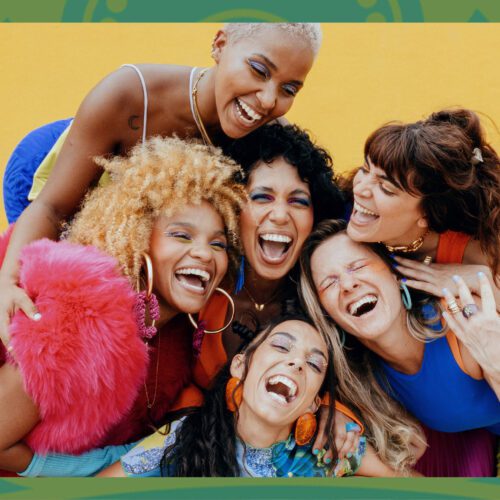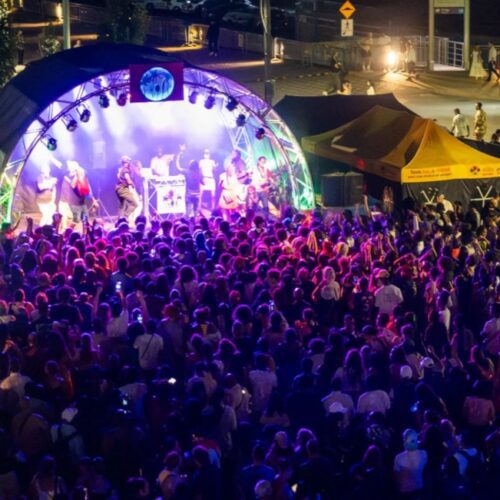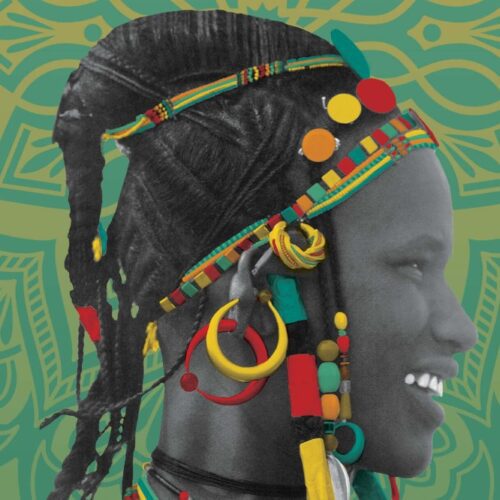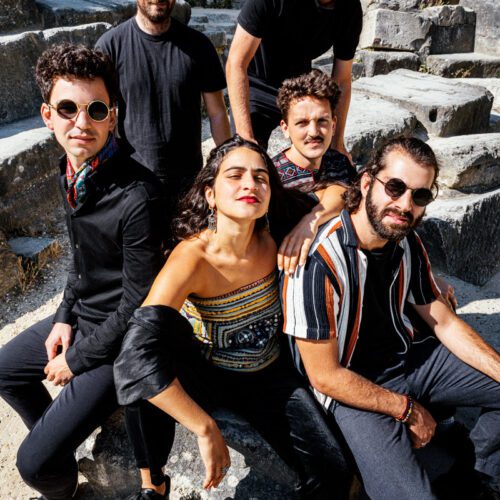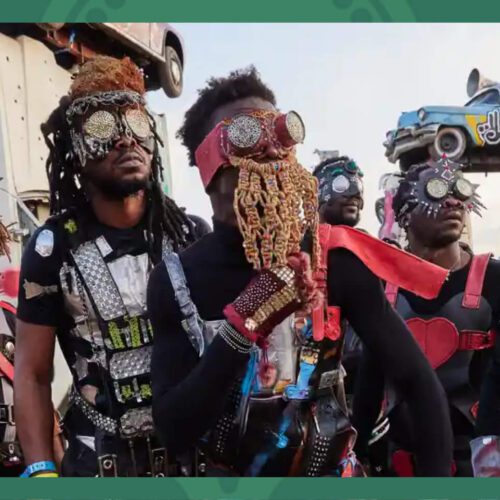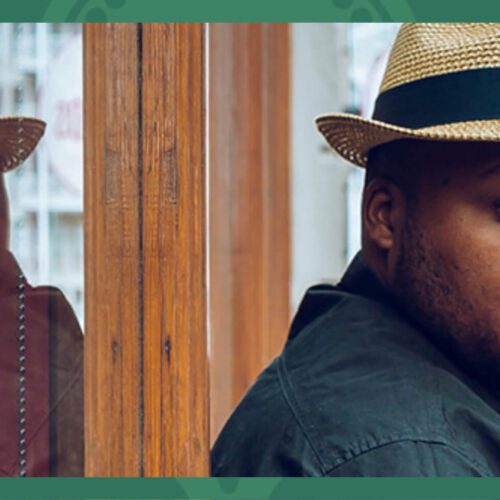Additional Information
For eight years now, Exposé Noir has been a steady undercurrent in Montrealʼs underground scene, quietly shaping spaces where music, visuals, and community coalesce. We talked with M, one of the two core organizers of the project, to talk about its beginnings, their curatorial approach, and how theyʼve navigated the shifting tides of the local electronic music landscape.
PAN M 360: Exposé Noir has been part of Montreal’s underground for nearly a decade. Could you take us back to its beginnings? What was this part that pushed you to create and what kind of space were you dreaming of back then? So, take us back to the beginning. What was the spark and what kind of space were we trying to create?
M : So the project basically began in 2017. It was not my brainchild, but the one of my co-organizer, who came up with this concept that was very much inspired by the underground culture in Europe that he wasnʼt necessarily seeing here in Montreal, where it takes electronic music but infuses different layers of visual art and design for a more intentionally curated experience. From A to Z, from when you arrive to what the space is to what kind of artists youʼre booking. So, yeah, I would say it was kind of born from that, like, “okay, hereʼs something that we donʼt necessarily have on a large scale that could be cool to import.ˮ
We were introduced to each other by chance. He didnʼt have any organization experience but had a vision of what he wanted to do, and after coming to a loft party I had organized, got in touch, asked me if I like techno. I love techno. So we didnʼt know each other at all, but we started meeting, and we kind of got really lucky for our first event. The stars aligned.
Through a mutual connection, we got access to the Darling Foundry, which is actually pretty hard to book, and we got a DJ who is now not necessarily our style but at the time was more underground, Amelie Lens. She is now one of the biggest names in techno music, so we got her just at the right time when she had a lot of hype but wasnʼt yet unaffordable or too commercial. Things came together nicely, and it was definitely a big mess, but ultimately we pulled through, and we thought: “okay, thatʼs cool. Whatʼs next?ˮ. So since then, opportunities aligned, and we kept it going, defining our approach in the process.
PAN M 360: This is very elaborate, thank you. And it follows perfectly with the second question: Over the years, how have you witnessed the techno and experimental electronic music scene in Montreal evolve? So like you were talking with that DJ, that initially was interesting and then maybe you were looking for something else. Has Exposé Noir always grown alongside, or sometimes against these changes?
M: I definitely think itʼs 100% alongside. I would have to think hard to find ways in which we’ve gone against the changes. I would say we’ve been a part of them. At the beginning we were newbies, but now we’re part of a kind of wave of organizers. In my head I’m still this new organizer, but then people start coming to me for advice, like promoters that are 10 years younger than you, and you realize youʼre an old one now. It really happens without you noticing. I’ve seen the scene here evolving in a lot of really positive ways – I would say pretty much only positive. Thereʼs maybe some ways in which it’s gotten worse, but thatʼs more universal, for example, the influence of social media and the big tech companies on how we consume information and what information is consumed, and how that shapes culture in certain ways.
I’ve seen the scene professionalized in a lot of really positive ways, not in the sense that itʼs gotten more commercial, but in the sense that things like safety and information sharing between organizers has changed dramatically. There used to be a lot of gatekeeping, and people would get away with doing all sorts of things. Whereas now thereʼs a lot more transparency, thereʼs a lot more cooperation. I work all the time with other organizers that do disco parties and bass music parties, stuff thatʼs completely different. But we all know that we’re working towards the same goal. So Iʼve seen it take a really positive direction. Obviously, there are always ways to improve, but the trend for me has been positive.
PAN M 360: Exposé Noir lineups have always struck a delicate balance between local and international acts. How do you approach curation, and what kinds of conversations do you hope to open between these different communities?
M: Yeah, itʼs a great question. I mean, I think one maybe more critical perspective of our events that is sometimes raised, which I think has validity to it, is the fact that weʼre very oriented towards international artists. Most of our parties are at least half or majority local, but sometimes they end up being more international, like this one. My perspective though is that itʼs not always just about quantity, itʼs also about giving a really high-quality platform to artists. Thatʼs a big thing of what weʼre trying to do. Weʼre not just going to book our friends all the time, weʼre gonna try to find the perfect opportunity to book someone in a way that weʼre really excited about. So rather than it just being another gig, weʼre trying to make the best possible platform for artists to meet and play with other amazing artists from all around the world. We often see people citing our parties as one of their achievements on their profile, and that helps them maybe get other gigs.
PAN M 360: This upcoming four days feels like both an expansion and a culmination. What inspired you to take this bold step now, with the Belvedere experience, even though youʼve done it before? And how does this event reflect where you and Exposé Noir are at today?
M: We have a really amazing team! Some people are more central and some people are more indirectly involved—but at the core, itʼs just two people. We kind of have a dynamic where one of us will be the unrealistic dreamer, and the other one will be like: “Okay, no, letʼs come down to reality.ˮ Itʼs often a push and pull, and we take turns.
This time it was my partner who was going crazy, and there was the Wire festival in New York that was bringing in a lot of amazing artists to the region. So it just kept piling up, and then thereʼs a thing where when you get a certain number of artists on board, other artists will see that and go, “oh, I want to play at that party.ˮ It quickly became this runaway train where it was originally just going to be a weekend, then it was three days, and then we added the Monday. At first it was a dream, and then we thought: “okay, we dug ourselves into this hole. How do we dig ourselves out?ˮ
PAN M 360: Representation, diversity, and safer spaces have always been part of your DNA. Beyond the buzzwords, how do you personally navigate these questions when building spaces that are truly welcoming and transformative?
M: I think itʼs a really good question because these concepts can be a double-edged sword in the way that they can be tokenized. You can see this happening in certain organizations, like Pride for example. Theyʼve become this big establishment in Montreal, and even though their mandate is supposedly diversity, theyʼre bullying smaller groups of people within these communities. Weʼre happy because when you look at the data of our bookings, a huge percentage are gender minorities or racial minorities, like a majority. But thatʼs never at the front end of our goals. What I think is most important is to really shine a light on the contributions of these different communities. We look at the amazing contributions that Black arts in a certain region have done or that queer artist from another place and giving them the space on the platform.
We also want our life not to be boring too. You see more dated promoters—itʼll just be like six white guys with the same haircut and wearing black T-shirts, like I am right now. So we need to be self-aware that weʼre not always experts on everything. And when youʼre open to all the cool shit thatʼs going on, like the crazy Mamba Negra parties happening in Brazil or the Mjunta shit theyʼre doing in Berlin—just being aware of amazing shit happening is gonna inspire you as a programmer and make your life a lot easier.
PAN M 360: The spaces youʼve been in—like the raw industrial souls of the Belvedere —always feel deeply tied to the experience you craft. How do you see the relationship between the physical environment, the sound, and the collective energy of the crowd?
M: I personally have always viewed the space as one of the main headliners. In fiction, thereʼs an interesting perspective where you can look at inanimate objects or things like the wind or a place as a character. And I find that really interesting— to think of space as almost having its own agency. You can think of it almost as another artist on your lineup. Itʼs something that attracts people, but itʼs also something that frames your work. Like when we use new venues, which we often are looking to do, then itʼs a whole new puzzle. It forces us to rethink the flow of things. But take an existing venue like the science center here, and itʼs like, “okay, weʼve done it a few times already. How do we take it to the next level?ˮ Thereʼs always new challenges and opportunities with each space, and obviously, we take the visual aspect very seriously, so we put a huge effort into finding new venues. Itʼs a lot more time-consuming than one might think.
PAN M 360: Beyond the dance floor, Exposé Noir has become a kind of gathering point for a wider community of artists, activists, and dreamers. How do you see your role, not just as an organizer, but as a cultural worker supporting local ecosystems and voices?
M: Itʼs definitely something important to keep in mind. A festival like this—thereʼs at least 50 or 60 people on the payroll and a good core of like 30 people working for us every month. Weʼve become like an employer in a way, which is kind of crazy, so thatʼs cool in terms of, I think thatʼs something thatʼs often overlooked. So thereʼs a really cool economic thing happening where people might have trouble getting a 9-to-5 but have amazing skills to contribute.
In terms of the culture, honestly, I have no idea, because there is a kind of deliberately aloof approach. Itʼs really not about trying to make you a certain way or promote a certain look. I love that I walk into my parties and I see people of all walks of life. You know, I see young, crusty artists, I see people in their 60s having a great time, I see young professionals letting loose. I think the broader culture thatʼs really cool—that we are honored to be a part of—is night culture and how it provides a really amazing space for people to be themselves more, or at least explore other parts of themselves. So if we can provide that kind of space successfully, then I would say thatʼs the thing that Iʼm very grateful to do.
PAN M 360: Running an independent, community-rooted project for this long is no small feat. Weʼre all aware of this. What have been the hardest lessons or moments of doubt youʼve faced over the years, and what keeps you going?
M: Thereʼs definitely a lot of challenges, and weʼre constantly joking or seriously talking about hanging up our gloves or whatever you say. This will be our last year in full operation, and what 2026 holds, I donʼt know. Weʼre not closing the door, but certainly, the health and financial aspects have been hard. Itʼs hard on your relationships. For an event like this, not only am I here for four days, Iʼm here weeks before working nonstop, and not every friendship or romantic relationship is compatible with that. Weʼre lucky to have partners that are, but that wasnʼt always the case. So thereʼs a personal cost, and even financially, people see a huge event and they assume weʼre rolling in it, but the reality is weʼre scraping by. On the positive side, weʼre trying to make our events also for ourselves and for our staff—healthier spaces where wellness is at the center. Planning things better, offering nice quality espresso and fruits in order to take care of ourselves and our team more. But ultimately, itʼs not sustainable forever.
At a certain point, itʼs like we had our run, and it will leave room for others. You leave a vacuum, and you let other people fill it. I remember you were mentioning the day parties also, which is something that is an option, especially as we get older. Day parties are great, and it fits into a broader view of night culture that I fully support. I think we should make a different word for nightlife that includes day parties since theyʼre part of the same culture. I would love it if from Friday to Monday morning, you can go out at any time and the parties are gonna be great. You can go sober, you can sleep, you can stay up all night. Thatʼs what I would love to see.
PAN M 360: Past editions have also opened up to art installations. Like in the previous edition in the Belvedere. What conversations do you hope to spark by weaving together music, visual art, and new technologies within the same space?
M: I donʼt know how much we go into new technology. I would say weʼre almost a bit old-school in our approach. Everything we do could have been done in the 90s. Weʼre definitely not that original or maybe not even that innovative in a way. Some things are just timeless. For example, we almost never use visual projections. Thatʼs just our personal tastes. Unless thereʼs a really specific installation—for example, when we did our three-day event last year, we had a photo exhibition by Sven Marquardt. Then there was a live set from MMSI with visuals by Deograph on butcher curtains, and that was in a way innovative. But usually, weʼre working with a bunch of fog machines and a bunch of lights that we build internally and design internally. Itʼs just things that work, things that you can do yourself and create this elaborate and impressive effect with minimal costs.
That kind of multidisciplinary aspect has always been important to us from the beginning. As I was saying, weʼve done a really amazing runway show with a young designer, Jesse Colucci, who runs Process Visual, with the Festival International du Film sur lʼArt, and with Cinema Erotica. It was really fun to first of all, create something really unexpected for people that they donʼt often see in electronic music events. Weʼre lucky that we have this discipline of throwing events that people are going to come to regardless, because itʼs the party, itʼs whatʼs going on. People go out. They donʼt necessarily have that privilege in the worlds of film and visual art. Itʼs hard to get more than 100 people in the gallery. So weʼre able to take these people and expose them to really cool vintage black and-white photography or a trippy-ass experimental movie. Of course, when we do these things, I have a certain nervousness. Is it going to make sense? Is it going to work? Youʼre taking a leap of faith, but if you find really talented people, you can just trust them—theyʼre gonna get the assignment, and theyʼre gonna do it right.
PAN M 360: Looking ahead, whether or not this is a turning point for Exposé Noir, what are the questions, dreams, challenges that still drive you? Are there new territories you feel like you want to explore?
M: Definitely, weʼre always trying to switch it up to not get bored of the project, so we’re always challenging ourselves. Thereʼs a certain Sisyphean element to that where our team is getting better and weʼre getting more experienced, but the event itself is getting more complex. Itʼs this treadmill thatʼs always getting faster. We never want to be the people that just do the same thing with a party over and over. We want to make our last year as special as we can so that hopefully by the end of it, weʼll have created strong memories and feelings that will be carried on into the future.

